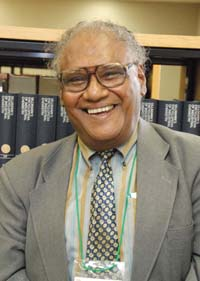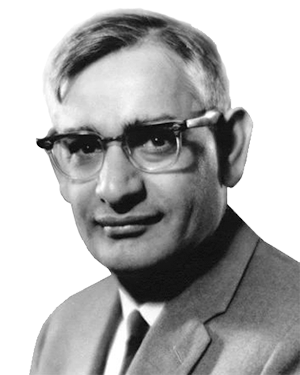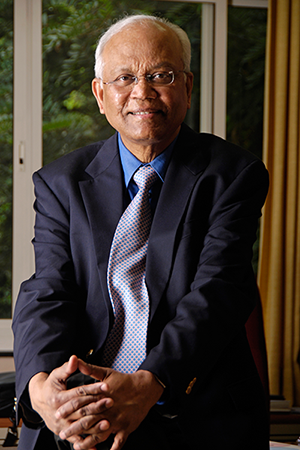Famous Chemistry Scientists of India and their Contributions
10-12-2024
10:32 AM
GS III
Sub-Categories:
Science and Technology
Prelims: General Science.
Mains: Achievements of Indians in science and technology; indigenization of technology and developing new technology.
From ancient to modern times, the contributions of Indian scientists to chemistry have been significant. In ancient India, chemistry was known as Rasayan Shastra or Rasatantra or Rasakriya. In the early years after independence, Indian chemists contributed immensely to what came to be called 'reverse engineering' and they perfected the market for the manufacture of cheap generic drugs so much so that India has now come to be known as a 'pharmacy of the world', ranking 3rd in pharmaceutical production.
Development of Chemistry in India
Science and Technology in ancient and medieval India covered all the major branches of human knowledge and activities, including mathematics, astronomy, physics, chemistry, medical science and surgery.
- Ancient India's contribution to Science and Technology included principles of chemistry that did not remain abstract but also found expression in practical activities like the distillation of perfumes, and aromatic liquids, manufacturing of dyes and pigments and extraction of sugar.
- Indus Valley Civilisation (IVC): In pottery making during the IVC, chemical processes were carried out in which materials were mixed, fired and moulded to achieve their objectives.
- Residents of the IVC had access to gold and copper mining, and the area was possibly a source of semi-precious stones. This is seen in the jewellery recovered in the vicinity.
- Vedic Age: The chemical activities of this period were illuminated by the Puranas and Upanishads. The Indian alchemists were skilled at casting metals, extracting metals from their ores, and smelting metals.
- For example: The Ramayana and the Mahabharata mention weapons with arrowheads coated with a variety of chemicals, indicating their knowledge of Alchemy.
- Vaiseshika Darsana of Kanada propounded the concept of the atom and its indivisibility and the law of cause and effect.
- ‘Artha Sastra’ also describes the qualities of Gold and silver.
- Gupta Empire: Nagarjuna, the famous alchemist lived during this period. The use of mercury and iron in medicines indicates a deep knowledge and understanding of Chemistry.
- Due to the smiths' knowledge of advanced metal technology, bronze images of the Buddha began to be produced on a large scale. The Mehrauli Iron Pillar stands free of rust and corrosion for centuries.
- In Medieval India, gold making and elixir synthesis were the two main characteristic streams of alchemy.
- The Rasvidya (Indian Alchemy texts) reveal the use of a variety of organic and inorganic substances.
Famous Chemistry Scientists of India
The achievements of Indian scientists have been recognized at the global level. These achievements will play a decisive role in India joining the list of developed countries.
Some prominent Indians who excelled in the field of chemistry are given below:
Prafulla Chandra Ray (1861-1944)

- Prafulla Chandra Ray was a chemist and industrialist who founded Bengal Chemicals & Pharmaceuticals (India’s first pharmaceutical company).
- He is regarded as the ‘Father of Chemical Science in India’ and he established the first Indian research school in chemistry.
- He contributed to inorganic and organic nitrites.
- In 1895 he reported the first synthesis of the hitherto unknown mercurous nitrite, Hg2(NO2)2.
- Around 1914, he initiated work on organic thio compounds like thiols, thioethers, and related species and their binding to metals.
- Books: A History of Hindu Chemistry from the Earliest Times to the Middle of Sixteenth Century (1902), ‘Life and Experience of a Bengali Chemist’ (autobiography).
Chintamani Nagesa Ramachandra Rao (1934)

- Professor C.N.R. Rao is a well-known expert in structural and solid-state chemistry.
- He has contributed significantly to chemical spectroscopy, molecular structure, surface chemistry, and high-temperature superconductivity.
- His early research focussed on the application of spectroscopic techniques to study molecular structure.
He studied many chemically important issues using electronic and vibrational spectroscopy, including correlations between spectra and structural features, the effects of the environment, vibration analysis, etc.
- His research has paved the way for the creation of comprehensive models that explain the behaviour of numerous metal oxides and sulfides.
- Awards: He is the winner of the first India Science Award, (2006).
Padma Shri, Padma Vibhushan, and Bharat Ratna (2014).

Har Gobind Khorana (1922-2011)

- Har Gobind Khorana was a founder of chemical biology and a pioneer in molecular biology.
- He was one of the first researchers to show the function of nucleotides in protein synthesis and helped to crack the genetic code.
- He had synthesised a more complex molecule, Coenzyme A, which is involved in digestion.
This success marked him as one of the most important biological chemists of his time.
- In 1972, he completed the total synthesis of a functional gene outside a living organism.
He also showed it could function appropriately in a bacterium.
- Awards: Nobel Prize for Physiology or Medicine in 1968 for contributions toward elucidating the genetic code.
Shanti Swarup Bhatnagar (1894-1955)

- Shanti Swarup Bhatnagar played a significant part in the building of post-independent S&T infrastructure and in the formulation of India’s S&T policies.
- He was the Founder-Director of the Council of Scientific and Industrial Research (CSIR), and the first Chairman of the University Grants Commission (UGC). He did considerable work in applied and industrial chemistry.
- The first industrial problem undertaken by him was the development of a process to convert bagasse (peelings of sugarcane) into food cake for cattle.
- Best known for making wax odourless, he also discovered how to make the kerosene flame taller and larger, thus helping multitudes of Indian households.
- Book: ‘Physical Principles and Applications of Magneto Chemistry (Bhatnagar jointly with K.N. Mathur)
- Awards:
- Order of the British Empire: Based on his significant contributions to both pure and applied chemistry, the British government awarded Bhatnagar the Order of the British Empire in 1936.
- Padma Vibhusan.
- The "Shanti Swarup Bhatnagar (SSB) Prize for Science & Technology" was instituted in his honour by the Council of Scientific and Industrial Research (CSIR) for notable and outstanding research in various fields of science.
Dr. Raghunath Anant Mashelkar (1943)

- Dr. Raghunath Anant Mashelkar is one of India’s most eminent scientists known for his contributions to India’s National Chemical Laboratory and CSIR.
- Dr Mashelkar’s pioneering research in polymer science and engineering is covered in several research journals.
- He is best known for his crusade against the US patents on turmeric, neem and basmati rice.
- Arguing that the healing properties of turmeric are well known as traditional knowledge in India, he fought a successful legal battle to revoke the patent. This victory was so significant that it changed the way patents were classified, and earned him the moniker of ‘The Warrior of Haldighati’.
- Awards:
- Padmashri, Padma Bhushan and Padma Vibhushan.
- First Indian to be elected a Fellow
Venkataraman Ramakrishnan (1952)

- Venkataraman Ramakrishnan is a Nobel Prize-winning biochemist. His contributions include work on the atomic structure of the ribosome.
- He studied the structure of chromatin and histone, which aids in the understanding of how DNA is arranged in cells.
- He determined the atomic structure of the 30S ribosomal subunit and then the structures of the whole ribosome in a variety of states and in complexes with various antibiotics.
- He explained through the 3D technique how ribosomes react with different chemicals.
- Nobel Prize in Chemistry for his work on ribosomal structure and was knighted in 2012.
FAQs on Famous Chemistry Scientists of India
Who were the Indian scientists who contributed to chemistry?
Prafulla Chandra Ray, C N R Rao, Venkataraman Ramakrishnan, and Dr. Raghunath Anant Mashelkar are some of the Indian scientists who contributed to chemistry.
Who was the first Indian to get the Nobel Prize in Chemistry?
Venkatraman Ramakrishnan is an Indian-born physicist and molecular biologist who was awarded the 2009 Nobel Prize for Chemistry for his work on ribosomal structure.
Who is the father of Indian chemistry?
Sir Acharya Prafulla Chandra Ray was a remarkable scientist, industrialist, and philanthropist, widely known as "the father of Indian chemistry," Ray was a pioneer and figurehead of modern chemical research in India.

© 2024 Vajiram & Ravi. All rights reserved